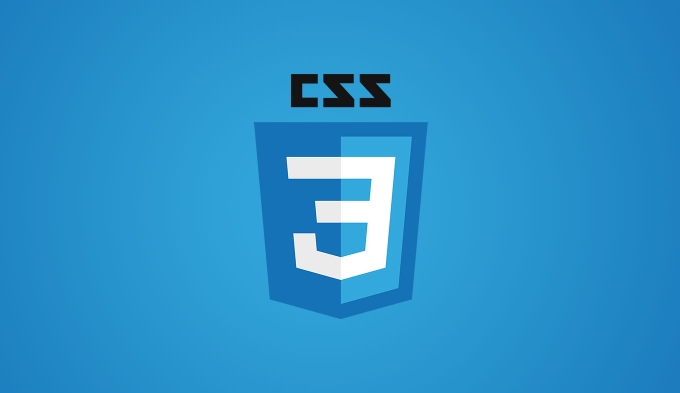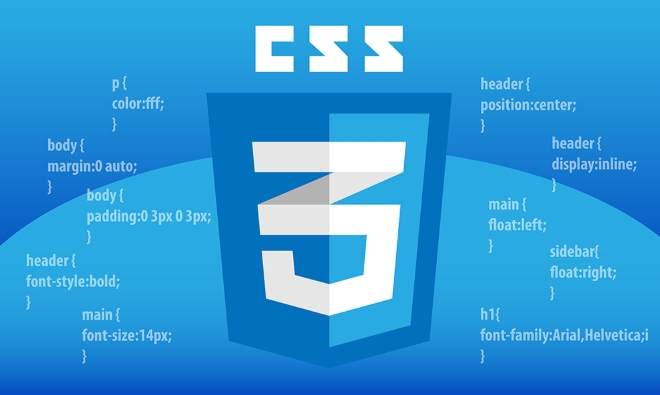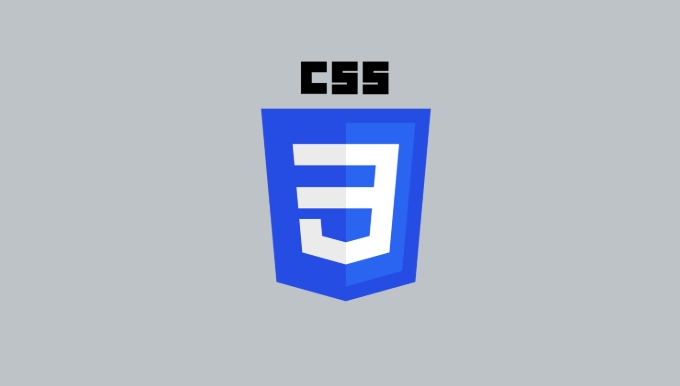Describe the `vertical-align` property and its typical use cases
Jul 26, 2025 am 07:35 AMThe vertical-align property in CSS aligns inline or table-cell elements vertically. 1. It adjusts elements like images or form inputs within text lines using values like baseline, middle, super, and sub. 2. In table cells, it controls content alignment with top, middle, or bottom values, often used in simulated table layouts. 3. With form elements, applying vertical-align: middle helps align checkboxes or buttons with labels for consistent appearance across browsers.

The vertical-align property in CSS controls how elements are aligned vertically relative to each other. It’s commonly used to adjust the position of inline or table-cell elements, like images inside text or cells within a table. While it seems simple, it often confuses developers because it doesn’t behave like a vertical counterpart to text-align.

How vertical-align works with inline elements
One of the most common uses of vertical-align is aligning inline elements such as images, icons, or form inputs within a line of text.
- The default value is
baseline, which aligns the bottom of the element with the baseline of the parent text. - If you want an image to sit higher within a line (like a superscript), you can use
vertical-align: super. - Conversely, for subscript-style alignment,
vertical-align: subworks well.
For example:

<p>This is some text with an <img src="/static/imghw/default1.png" data-src="icon.png" class="lazy" style="max-width:90%" alt="Describe the `vertical-align` property and its typical use cases" > inline image.</p>
Using vertical-align: middle in this case helps center the image vertically with the surrounding text.
Keep in mind: vertical-align only affects inline and table-cell elements — it won’t do anything on block-level elements like <div> by default.

Aligning content inside table cells
When working with table layouts (or elements styled as table cells), vertical-align becomes especially useful for controlling how content is positioned within the cell.
- By default, content in a table cell is aligned to the top (
vertical-align: top). - If you want text or elements centered vertically inside the cell, use
vertical-align: middle. - For bottom alignment,
vertical-align: bottomis your go-to.
This also applies when you're using CSS to simulate table layouts with display: table and display: table-cell.
Example:
<div style="max-width:90%">
<div style="display: table-cell; vertical-align: middle;">
Vertically centered content
</div>
</div>This technique is often used in older layouts or when building responsive components where vertical centering is needed without flexbox or grid.
Using vertical-align with form elements
Form controls like <input>, <select>, and <button> can sometimes look misaligned when placed next to labels or other inline content.
- Adding
vertical-align: middleto these elements can help align them better with surrounding text or icons. - You might still need to tweak line heights or padding depending on the browser default styles.
For example:
<label> <input type="checkbox" style="vertical-align: middle;"> Check me </label>
This helps ensure that the checkbox sits nicely in line with the label text instead of looking too high or low.
Summary
The vertical-align property is useful but often misunderstood. It works best for inline elements and table cells, making it ideal for aligning text with images, centering content in table cells, or fine-tuning form elements.
It’s not a universal vertical centering tool — for full vertical centering of block-level containers, you’ll want to use flexbox or grid instead.
But for those small inline adjustments, vertical-align is the right tool for the job.
The above is the detailed content of Describe the `vertical-align` property and its typical use cases. For more information, please follow other related articles on the PHP Chinese website!

Hot AI Tools

Undress AI Tool
Undress images for free

Undresser.AI Undress
AI-powered app for creating realistic nude photos

AI Clothes Remover
Online AI tool for removing clothes from photos.

Clothoff.io
AI clothes remover

Video Face Swap
Swap faces in any video effortlessly with our completely free AI face swap tool!

Hot Article

Hot Tools

Notepad++7.3.1
Easy-to-use and free code editor

SublimeText3 Chinese version
Chinese version, very easy to use

Zend Studio 13.0.1
Powerful PHP integrated development environment

Dreamweaver CS6
Visual web development tools

SublimeText3 Mac version
God-level code editing software (SublimeText3)

Hot Topics
 How to use PHP to build social sharing functions PHP sharing interface integration practice
Jul 25, 2025 pm 08:51 PM
How to use PHP to build social sharing functions PHP sharing interface integration practice
Jul 25, 2025 pm 08:51 PM
The core method of building social sharing functions in PHP is to dynamically generate sharing links that meet the requirements of each platform. 1. First get the current page or specified URL and article information; 2. Use urlencode to encode the parameters; 3. Splice and generate sharing links according to the protocols of each platform; 4. Display links on the front end for users to click and share; 5. Dynamically generate OG tags on the page to optimize sharing content display; 6. Be sure to escape user input to prevent XSS attacks. This method does not require complex authentication, has low maintenance costs, and is suitable for most content sharing needs.
 PHP creates a blog comment system to monetize PHP comment review and anti-brush strategy
Jul 25, 2025 pm 08:27 PM
PHP creates a blog comment system to monetize PHP comment review and anti-brush strategy
Jul 25, 2025 pm 08:27 PM
1. Maximizing the commercial value of the comment system requires combining native advertising precise delivery, user paid value-added services (such as uploading pictures, top-up comments), influence incentive mechanism based on comment quality, and compliance anonymous data insight monetization; 2. The audit strategy should adopt a combination of pre-audit dynamic keyword filtering and user reporting mechanisms, supplemented by comment quality rating to achieve content hierarchical exposure; 3. Anti-brushing requires the construction of multi-layer defense: reCAPTCHAv3 sensorless verification, Honeypot honeypot field recognition robot, IP and timestamp frequency limit prevents watering, and content pattern recognition marks suspicious comments, and continuously iterate to deal with attacks.
 What are common CSS browser inconsistencies?
Jul 26, 2025 am 07:04 AM
What are common CSS browser inconsistencies?
Jul 26, 2025 am 07:04 AM
Different browsers have differences in CSS parsing, resulting in inconsistent display effects, mainly including the default style difference, box model calculation method, Flexbox and Grid layout support level, and inconsistent behavior of certain CSS attributes. 1. The default style processing is inconsistent. The solution is to use CSSReset or Normalize.css to unify the initial style; 2. The box model calculation method of the old version of IE is different. It is recommended to use box-sizing:border-box in a unified manner; 3. Flexbox and Grid perform differently in edge cases or in old versions. More tests and use Autoprefixer; 4. Some CSS attribute behaviors are inconsistent. CanIuse must be consulted and downgraded.
 How to build a PHP Nginx environment with MacOS to configure the combination of Nginx and PHP services
Jul 25, 2025 pm 08:24 PM
How to build a PHP Nginx environment with MacOS to configure the combination of Nginx and PHP services
Jul 25, 2025 pm 08:24 PM
The core role of Homebrew in the construction of Mac environment is to simplify software installation and management. 1. Homebrew automatically handles dependencies and encapsulates complex compilation and installation processes into simple commands; 2. Provides a unified software package ecosystem to ensure the standardization of software installation location and configuration; 3. Integrates service management functions, and can easily start and stop services through brewservices; 4. Convenient software upgrade and maintenance, and improves system security and functionality.
 Describe the `vertical-align` property and its typical use cases
Jul 26, 2025 am 07:35 AM
Describe the `vertical-align` property and its typical use cases
Jul 26, 2025 am 07:35 AM
Thevertical-alignpropertyinCSSalignsinlineortable-cellelementsvertically.1.Itadjustselementslikeimagesorforminputswithintextlinesusingvalueslikebaseline,middle,super,andsub.2.Intablecells,itcontrolscontentalignmentwithtop,middle,orbottomvalues,oftenu
 What is the accent-color property?
Jul 26, 2025 am 09:25 AM
What is the accent-color property?
Jul 26, 2025 am 09:25 AM
accent-color is an attribute used in CSS to customize the highlight colors of form elements such as checkboxes, radio buttons and sliders; 1. It directly changes the default color of the selected state of the form control, such as changing the blue check mark of the checkbox to red; 2. Supported elements include input boxes of type="checkbox", type="radio" and type="range"; 3. Using accent-color can avoid complex custom styles and extra DOM structures, and maintain native accessibility; 4. It is generally supported by modern browsers, and old browsers need to be downgraded; 5. Set accent-col
 How to compile SCSS to CSS?
Jul 27, 2025 am 01:58 AM
How to compile SCSS to CSS?
Jul 27, 2025 am 01:58 AM
InstallDartSassvianpmafterinstallingNode.jsusingnpminstall-gsass.2.CompileSCSStoCSSusingthecommandsassinput.scssoutput.css.3.Usesass--watchinput.scssoutput.csstoauto-compileonsave.4.Watchentirefolderswithsass--watchscss:css.5.Usepartialswith_prefixfo
 How to change text color in CSS?
Jul 27, 2025 am 04:25 AM
How to change text color in CSS?
Jul 27, 2025 am 04:25 AM
To change the text color in CSS, you need to use the color attribute; 1. Use the color attribute to set the text foreground color, supporting color names (such as red), hexadecimal codes (such as #ff0000), RGB values (such as rgb(255,0,0)), HSL values (such as hsl(0,100%,50%)), and RGBA or HSLA with transparency (such as rgba(255,0,0,0.5)); 2. You can apply colors to any element containing text, such as h1 to h6 titles, paragraph p, link a (note the color settings of different states of a:link, a:visited, a:hover, a:active), buttons, div, span, etc.; 3. Most






